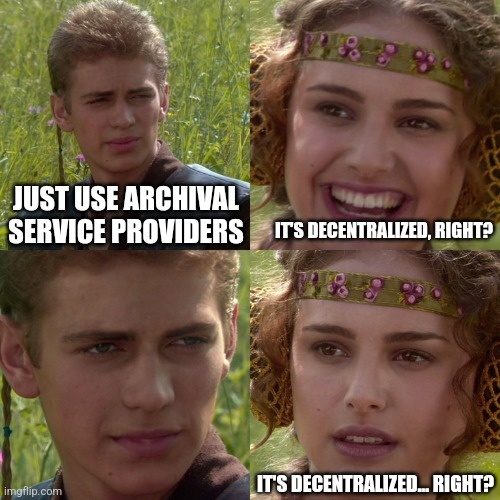Let’s talk about blockchain storage. Not the “kinda-sorta on-chain but actually somewhere else” storage that’s become the norm, but actual, permanent, on-chain storage. Because if we’re being honest: the current state of blockchain storage is a mess of compromises that nobody’s happy about.
Why On-Chain Storage Matters
Blockchain’s whole deal is trustless verification and guaranteed data integrity. So why are we still pushing critical data off-chain? Traditional solutions force you to trust external providers or hope IPFS nodes stay alive.
That’s not just a compromise – it’s completely missing the point of what chains are good at. Your smart contracts will live forever, but the assets they depend on might not.
True on-chain storage means your data lives where it belongs: right there on the chain, accessible and verifiable at all times.
The Problem with Off-Chain Storage
IPFS plays a crucial role in decentralized storage, but it wasn’t built for permanent on-chain data. The need for pinning services means your data’s availability depends on third-party providers and ongoing maintenance. For projects requiring guaranteed, perpetual data access, this creates an extra layer of complexity and potential points of failure that can be avoided.
Temporary storage is for nice-to-have data - the core information that makes your chain or dApp works needs to be permanent.
“Why Not Just Use Existing L1s?”
Fair question. Ethereum, Solana, and other L1s are great at what they do, but there’s a reason projects aren’t storing data directly on-chain. The answer is simple: they optimized for speed and throughput, not storage. And that’s a perfectly reasonable trade-off — when you’re processing thousands of transactions per second, something’s gotta give.
High-throughput chains generate massive amounts of data — Solana’s already pushing multiple petabytes per year. Ethereum’s tackling their own scaling issues with EIP-4444, which will drop historical data older than a year. Their solution: “trust third-party providers for historical data bro, it’ll be fine bro, just trust bro!”
But if we wanted to trust third parties with our data, we wouldn’t be building on blockchain in the first place. This isn’t about temporary storage or nice-to-have data. This is about the core information that makes your blockchain project work.
WeaveVM: Actually On-Chain Storage
We built WeaveVM as an EVM-compatible L1 because the blockchain space needs real on-chain storage. Not workarounds, not “well technically it’s decentralized,” but actual on-chain storage that developers can count on. Your data stays in the chain, permanently accessible and verifiable, exactly how blockchain was meant to work.
Off-chain storage has its place in the ecosystem. But when you need true on-chain data permanence without breaking the bank, that’s where WeaveVM delivers. We’ve built the most cost-effective solution for keeping your data where it belongs — secured and verified right there in the chain.
Compare costs with the WeaveVM Calculator, and reach out in the Discord if this sounds like a fit for your project.

